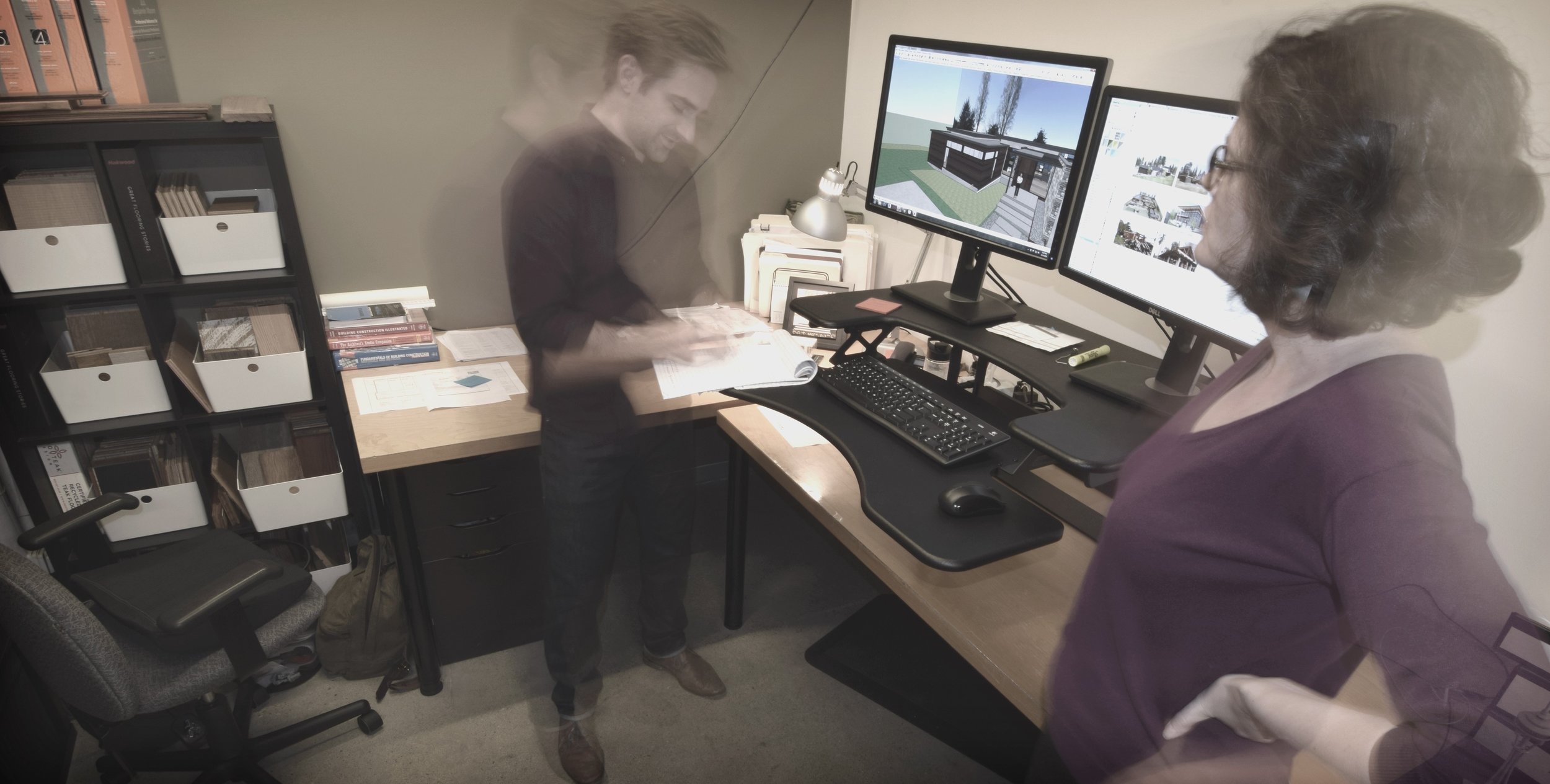10 ways an architect can help
1. Determine if your building project makes sense:
The cost of building your custom home should be consistent with real estate values of the surrounding neighborhood. Is your primary objective to make the house more livable for yourself, or to make it more salable to the next owner? Do your needs warrant building a new home? Is an addition the most effective way to get that extra space you require? Should you add a floor or expand your house’s footprint? An architect can help you decide.
2. Explore the potential of your site:
Your building site presents distinct design opportunities – perhaps a great view, or good sun exposure. Perhaps a distinctive tree that you want to save. It may also hold some hidden hazards – weak soil, poor drainage, or too steep of a slope. Your architect can analyze these factors to make the most of your site and avoid problems.
3. Determine if local zoning and other restrictions will affect your project:
Zoning ordinances and regulations may greatly effect what you are allowed to build on your property. Your building’s height, how much of your property is covered by the building, and how far it must be set back from the property line are all dictated by zoning regulations. An architect will help you determine how these and other restrictions apply to your project, and can assist you in filing applications and obtaining the necessary permits.
4. Analyze your wants and needs:
Share everything you can with your architect: your thoughts, notes, sketches, photos from magazines – anything that illustrates what you like. What are your routines? How do you function in your current home? How many rooms will you need in your new place? How much time will you spend in the various living areas, such as the kitchen, dining room, bedrooms? How long do you plan to live in your new home? Are you building for yourselves or for future buyers? Your architect takes this information and outlines the scope of your project in detail, recognizing your priorities and ultimately controlling project costs.
5. Marry your wants with practicality:
Your architect can help you make smart decisions about your home’s design that can serve and save you in surprising ways. It’s critical to have a realistic understanding of the potential – and limitations – of your project’s budget. By balancing your budget, square footage, and level of finishes, an architect helps you to prioritize your needs.
6. Design for your future:
Your architect can provide flexible design options to accommodate your changing family size, or reduced mobility as you grow older. Also, by proposing methods for lowering energy usage or maintenance, or by recommending certain amenities your architect can help you see the big picture and provide design solution that enhance your home’s long-term value and resale.
7. Visualize the design:
Once you and your architect define what’s to be built, the architect can help you visualize the design possibilities through a number of means, including rough sketches, computer renderings, or even physically staking out important dimensions directly on the site.
8. Help prepare construction documents and select a reputable contractor:
No handshake or letter of agreement is firm enough to cover all the roles, responsibilities and obligations that must be carried out in your building project. Your architect can prepare complete construction documents, detailed drawings and specifications that the contractor will use to establish construction costs and build the project.
9. Visit the job site and administer construction:
An architect’s involvement doesn’t end with preparing the drawings for construction work. As your advisor and agent, the architect will visit the site to protect you against work that is not according to the plans. With an architect observing construction, you get informed reports of the project’s progress, a trained eye towards quality control, and a check on the contractor’s monthly invoices.
10. Reduces costs:
An architect’s services are a wise investment. A well conceived project can be built more efficiently and economically. Architects plan your project with you – as ideas evolve changes can be made on paper, much less expensively than later when construction is underway. Thorough drawings also make it easier for a contractor to get the most accurate and lowest cost. An architect works with you to make sure you get the most from your project budget by reviewing all the options, selecting appropriate materials, and providing the highest quality design.
